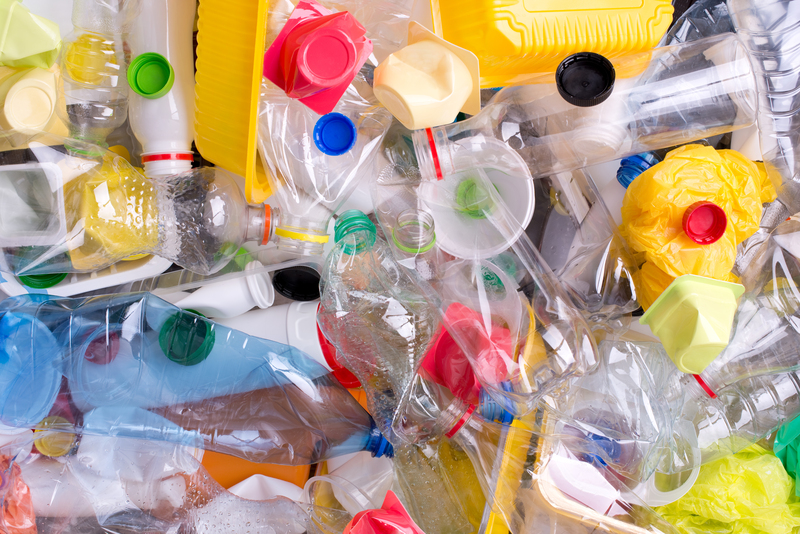Learn How to Responsibly Sort and Dispose of PPE Waste
In the wake of global health crises and an increased emphasis on safety, the use of Personal Protective Equipment (PPE) has skyrocketed. While PPE is essential to safeguarding our well-being, it has also introduced new environmental challenges. Learning how to responsibly sort and dispose of PPE waste is crucial in mitigating its impact on our planet and sustaining our communities for the future.

What Is PPE Waste?
PPE waste refers to any discarded materials designed to protect individuals from health hazards. Common examples include:
- Masks (surgical, N95, and cloth-based)
- Disposable gloves (latex, nitrile, vinyl)
- Face shields and goggles
- Protective gowns and suits
- Shoe covers, head caps, and aprons
With billions of these items being used and disposed of daily, responsible disposal of PPE waste has never been more significant.
Why Is Proper PPE Waste Disposal Important?
Improper handling and disposal of PPE can have damaging effects on the environment, wildlife, and public health. Here's why sorting and disposing of PPE materials responsibly is a necessity:
- Environmental Impact: PPE items, especially masks and gloves, are typically made of plastic-based materials, which take hundreds of years to decompose. They often end up in oceans or landfills, contributing to plastic pollution.
- Health Hazards: Discarded, contaminated PPE poses risks of spreading diseases to waste handlers, cleaners, and the general public.
- Wildlife Threats: Animals can become entangled in or ingest PPE waste, often with fatal consequences.
- Legal Obligations: Many regions have regulations regarding medical and infectious waste disposal. Non-compliance can result in hefty fines or other penalties.
Step-by-Step Guide to Sorting PPE Waste Responsibly
1. Identify the Types of PPE Waste
Not all PPE waste is the same. Before disposal, learn how to differentiate between contaminated (infectious) PPE and non-contaminated PPE. Commonly:
- Non-contaminated PPE: Used in daily activities without visible soiling or suspected infection risk (e.g., a mask worn in public spaces when you are not sick).
- Contaminated or potentially infectious PPE: Used in healthcare, caregiving, or in the presence of known or suspected illness.
2. Segregate PPE Waste at the Point of Disposal
Segregation is crucial to effective PPE waste management and ensures materials are treated and disposed of appropriately.
-
At Home:
- Place non-contaminated masks and gloves in a dedicated garbage bag separate from recyclables and green waste.
- If dealing with suspected COVID-19 or other infectious illness, double-bag the waste and clearly label it.
-
At Workplaces and Facilities:
- Provide color-coded bins according to local guidelines (e.g., red for infectious waste, black for general waste).
- Ensure staff are trained in the latest PPE disposal protocols.
3. Avoid Mixing PPE Waste with Recyclables
PPE is not always recyclable via regular municipal recycling systems. Items contaminated with bodily fluids or chemicals should never be placed in recycling bins, as they may spread contaminants, endanger recycling plant workers, and jeopardize the recycling process.
4. Secure and Label PPE Waste Bags
Always tie bags tightly and, if necessary, double-bag PPE waste to prevent leaks or accidental exposures. For contaminated PPE, clearly label the bag as "biohazard" or "infectious waste" if local regulations require it.
5. Follow Local Guidelines for Disposal
Local regulations vary. It's imperative to consult your municipality's rules for PPE waste disposal. Some cities may offer special pick-up services or designate drop-off sites for infectious/PPE waste.
Disposing of PPE Waste: The Do's and Don'ts
Do's:
- Do wash or sanitize your hands after handling PPE waste.
- Do keep PPE waste away from children and pets.
- Do use gloves when handling potentially infectious waste, and dispose of those gloves properly afterward.
- Do stay informed about evolving PPE waste regulations in your area.
Don'ts:
- Don't throw PPE waste directly into public recycling bins.
- Don't discard PPE on the street, sidewalks, parks, or beaches.
- Don't mix PPE items with your usual household paper, plastic, or compost waste.
- Don't attempt to reuse single-use PPE items.
Can Any PPE Waste Be Recycled?
This is one of the most common questions when learning how to responsibly dispose of PPE waste. Most single-use PPE--such as disposable masks and gloves--is made from mixed polymers and is not suitable for standard recycling streams. However, some recent initiatives and innovations are making strides in PPE recycling:
-
Specialized PPE Recycling Programs:
- Some organizations, like TerraCycle, partner with companies and communities to collect and process PPE waste.
-
Hospital-Based Recycling:
- Certain hospitals and clinics participate in pilot programs to recycle specific PPE types, like clean isolation gowns or face shields made from recyclable plastics.
-
Research and Development:
- Researchers are exploring methods to melt down and repurpose PPE plastics into construction materials or energy sources.
If you are interested in contributing to such programs, check whether PPE recycling options exist in your local area or workplace. Remember, never place PPE in general municipal recycling unless explicitly accepted.
How to Reduce Overall PPE Waste
While responsible sorting and disposal are critical, the most sustainable approach is to reduce the amount of PPE waste created whenever possible. Consider these strategies:
- Opt for Reusable PPE: Use washable cloth masks and washable gowns where appropriate and permitted, making sure to clean them according to guidance.
- Avoid Overuse: Only use disposable PPE when necessary, and never take more supplies than you need.
- Educate Others: Share knowledge on how to sort and dispose of PPE waste responsibly with your community or workplace.
- Support Sustainable Brands: Seek out PPE made from biodegradable or recyclable materials.
Innovative Solutions for PPE Waste Management
As awareness of the PPE waste problem grows, many organizations are developing creative solutions to manage this new waste stream more effectively. Here are a few promising examples:
- Introduction of Biodegradable PPE: Some manufacturers have begun producing PPE from plant-based or compostable materials. These break down naturally and reduce plastic pollution.
- Waste-to-Energy Facilities: Modern waste management plants are capable of converting non-recyclable PPE into energy through controlled incineration, minimizing landfill burden.
- PPE Collection Points: Grocery stores, pharmacies, and workplaces are setting up dedicated PPE disposal bins, which ensures proper handling and deters littering.
By supporting such initiatives, individuals and businesses can play an active role in advancing sustainable PPE disposal practices.
Key Takeaways: Responsible PPE Waste Sorting and Disposal
- PPE waste has environmental, health, and legal implications.
- Sorting PPE at its source and distinguishing between contaminated and non-contaminated items is crucial.
- Follow local guidelines for specialized disposal, and never mix PPE with regular recycling or compost.
- Hand hygiene is essential after handling or disposing of PPE waste.
- Support the reduction of PPE waste by using reusable equipment when safe, and by advocating for sustainable options.

Frequently Asked Questions (FAQs) About PPE Waste Disposal
1. Can I throw a used mask in my household bin?
Yes, but only if it is non-contaminated. Place it in a secure bag and never in the recycling or compost bin.
2. Are gloves recyclable?
Most single-use gloves are not recyclable through standard municipal streams. Only recycle through specialized programs if available.
3. Why can't I compost bioplastic PPE at home?
Even bioplastic PPE often requires industrial composting facilities to break down fully. Check local rules before attempting home composting.
4. Does double-bagging help?
Double-bagging is strongly encouraged for contaminated PPE, as it prevents leaks and protects waste handlers.
5. What should workplaces do to manage PPE waste?
Provide clear guidance, color-coded bins, regular staff training, and follow regulations for proper waste segregation and disposal.
Conclusion: The Responsibility Is Ours
By learning how to responsibly sort and dispose of PPE waste, we protect not only our own health but also the environment and those around us. As PPE continues to play a role in our lives, let's commit to thoughtful disposal practices and encourage others to do the same. Together, we can make a meaningful difference--one mask, glove, or face shield at a time.
Remember, responsible PPE disposal isn't just about following rules. It's about caring for our world and ensuring a healthier, cleaner tomorrow for all.